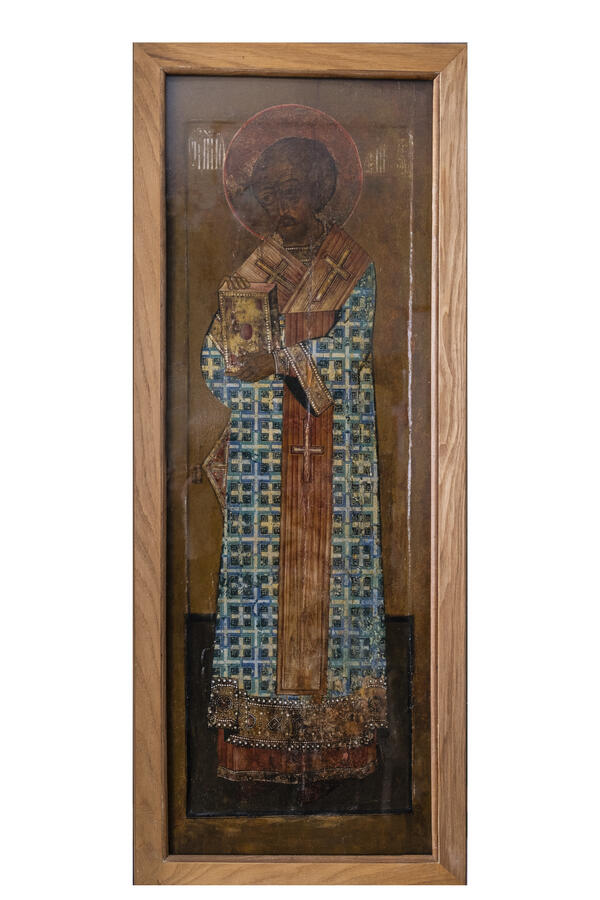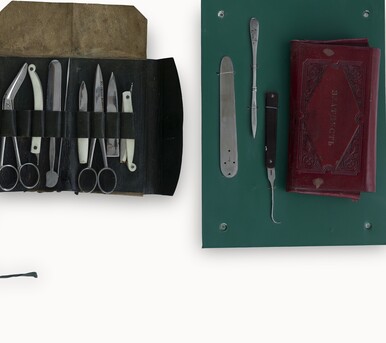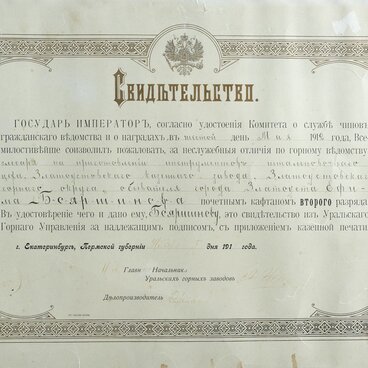The name of the city goes back to the name of St. John Chrysostom (known as Ioann Zlatoust in Russian), a major Byzantine philosopher and theologian. Residents consider him the patron saint of the city. In the contract for the construction of a plant in this area, which was singed in the Orenburg office on November 11, 1751, the plant was already named the Zlatoust Ironworks.
John Chrysostom (Ioannes Chrysostomos) lived from 347 to 407. In 398, he became the Patriarch of Constantinople. The theologian was considered one of the most honored fathers of the church. He was educated at the school of the pagan rhetorician Libanius in Antioch, an ancient Hellenistic city on the territory of modern Turkey. John himself became a brilliant orator, for which he received his nickname (Chrysostomos, which means “golden-mouthed”). He is the author of numerous sermons, panegyrics, psalms, and commentaries on the Bible.
The most common liturgy is associated with the name of John Chrysostom. In his sermons, he vividly depicted the social and religious life of his time. The struggle for the realization of the ascetic ideal and the criticism of social injustice made John Chrysostom popular, but the influential circles of the court and the higher clergy were set against him. In 403, he was sent into exile, then, out of fear of people’s discontent, was reinstated; still, in 404, he was deposed and exiled to Cucusus (Lesser Armenia).
John Chrysostom contributed to the expulsion of the Goths from Constantinople. In Byzantium and Russia, he was the ideal of a preacher and a fearless denunciator of impropriety, including for Archpriest Avvakum. He was canonized by the Russian Orthodox Church.
The icon of St. John Chrysostom from the collection of the museum of local lore was purchased in 1994 for 2 million rubles from Gennady Sergeyevich Belov, a resident of the town of Satka. The foundation of the icon consists of two panels held together with wedge keys.
St. John Chrysostom is depicted in full length in the vestments of an archbishop of the Greek Orthodox Church: with white crosses against the green background. The collar, hem and sleeves are richly ornamented. A red and brown epigonation can be seen on the right side. There is a closed book in the left hand. The image was created by icon painters of the Ural school in the mid-18th century, around the same time when the construction of the Zlatoust Ironworks began.
John Chrysostom (Ioannes Chrysostomos) lived from 347 to 407. In 398, he became the Patriarch of Constantinople. The theologian was considered one of the most honored fathers of the church. He was educated at the school of the pagan rhetorician Libanius in Antioch, an ancient Hellenistic city on the territory of modern Turkey. John himself became a brilliant orator, for which he received his nickname (Chrysostomos, which means “golden-mouthed”). He is the author of numerous sermons, panegyrics, psalms, and commentaries on the Bible.
The most common liturgy is associated with the name of John Chrysostom. In his sermons, he vividly depicted the social and religious life of his time. The struggle for the realization of the ascetic ideal and the criticism of social injustice made John Chrysostom popular, but the influential circles of the court and the higher clergy were set against him. In 403, he was sent into exile, then, out of fear of people’s discontent, was reinstated; still, in 404, he was deposed and exiled to Cucusus (Lesser Armenia).
John Chrysostom contributed to the expulsion of the Goths from Constantinople. In Byzantium and Russia, he was the ideal of a preacher and a fearless denunciator of impropriety, including for Archpriest Avvakum. He was canonized by the Russian Orthodox Church.
The icon of St. John Chrysostom from the collection of the museum of local lore was purchased in 1994 for 2 million rubles from Gennady Sergeyevich Belov, a resident of the town of Satka. The foundation of the icon consists of two panels held together with wedge keys.
St. John Chrysostom is depicted in full length in the vestments of an archbishop of the Greek Orthodox Church: with white crosses against the green background. The collar, hem and sleeves are richly ornamented. A red and brown epigonation can be seen on the right side. There is a closed book in the left hand. The image was created by icon painters of the Ural school in the mid-18th century, around the same time when the construction of the Zlatoust Ironworks began.



